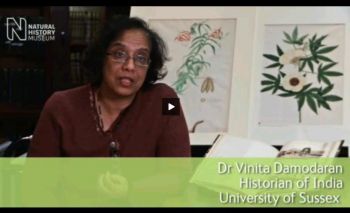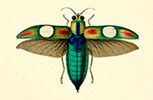India’s beautiful botanical past reviewed by Sussex historian
Posted on behalf of: History
Last updated: Friday, 1 March 2013


Jewel beetles - an image from about 1820 in the Art of India exhibition at the Natural History Museum.
Sussex historian Dr Vinita Damodaran is the academic expert in a new video, Art of India: Empire and the Natural World, made by the Natural History Museum to accompany an exhibition about the botanical interests of the British East India Company (EIC).
Dr Damodaran, whose research involves looking at the environmental history of Asia, comments on some of the many beautiful illustrations of plant and animal life commissioned by the EIC in British colonial India during the latter half of the 19th century and the beginning of the 20th century and which now form the year-long exhibition at the Natural History Museum in London.
A key aim of the EIC was to work out how best to exploit India’s natural products. Finding new plants for trading was crucial.
The company also had to feed and support an enormous army and civil service as it expanded its commercial operations and administrative power across India. To do this, and to manage and profit from India’s vast territory, the corporation needed to learn about the local plants, animals, agricultural practices and forestry.
Dr Damodaran says: “This record of the East India Company is an immensely useful resource. It’s a veritable Domesday Book, which is being used by researchers to understand biodiversity, plant distribution, climate change and also allows us to compare what was going on then and now.”

